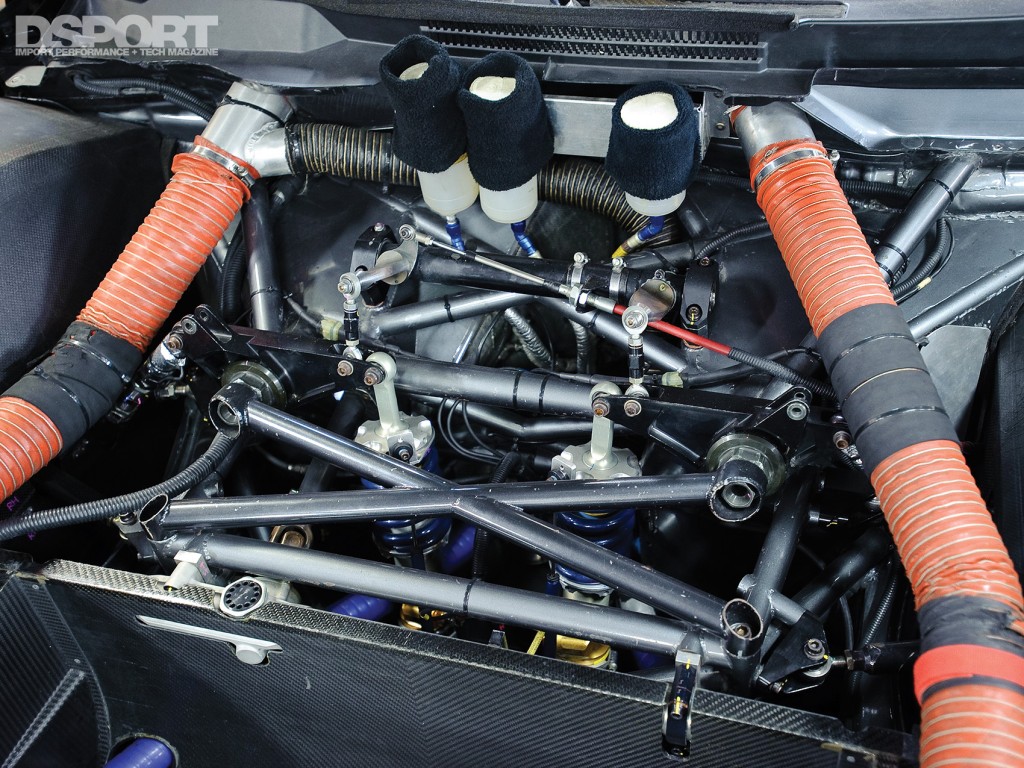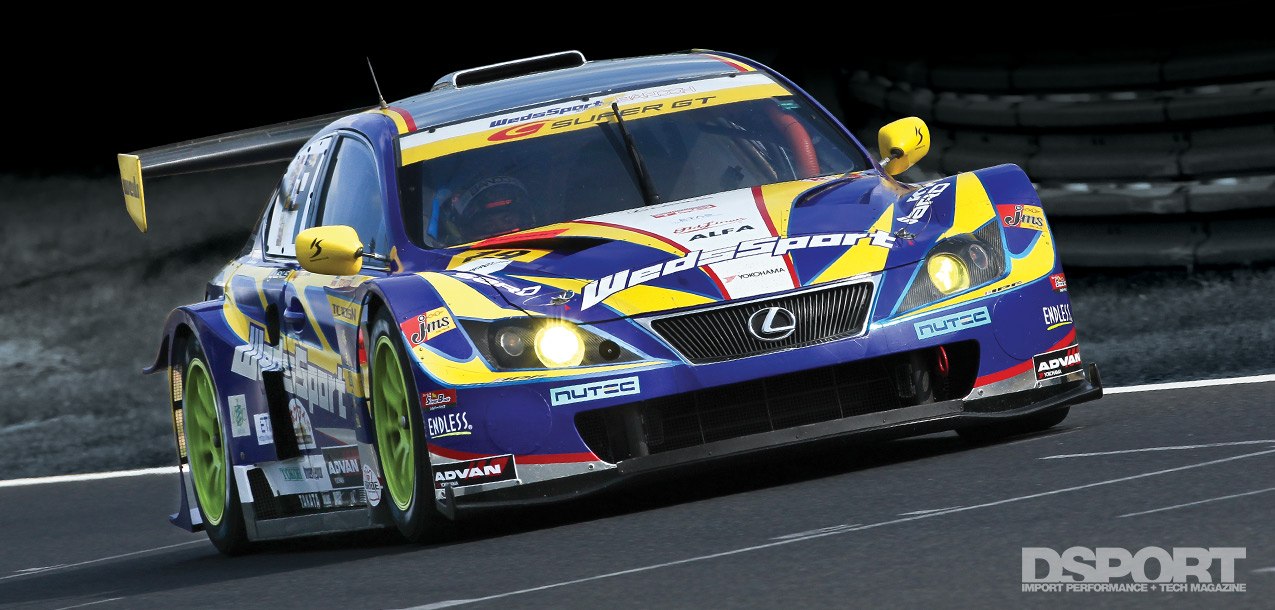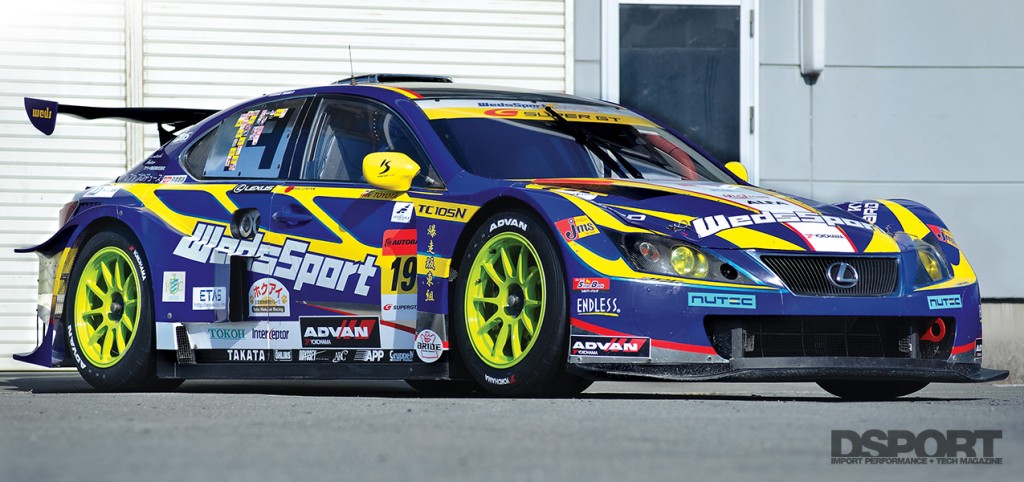“Challenge to the world.” This loose Japanese translation embodies the mission statement of the Super GT racing series. For those unfamiliar with Super GT, it’s practically the national motorsport of Japan. It started as the All- Japan Grand Touring Car Championship (JGTC) in 1993. Like America’s NASCAR, Super GT captivates the nation. In 2004, JGTC grew into an international motorsports venue. Expansion into other countries, FIA (Federation Internationale de I’Automobile) compliance, international recognition and global press coverage prompted the series name change to Super GT at the end of 2004.
Text by Richard Fong // Photos by Michael Ferrara and WedsSport
The Classes
Super GT includes two different classes, the GT500 and the GT300. The GT500 class, geared toward the factory-backed teams have rules intended to restrict engine output to 500 horsepower. The GT300 class restricts engine output to 300 horsepower. GT300 features considerably larger racing fields made up of privateer race teams. Like NASCAR, Super GT strives to produce a level playing field, so that no single team has a technical edge. Based on engine displacement, air restrictors of specific diameters are placed on the engines to limit horsepower. In addition, handicap ballast (extra weight) is added to the top qualifying vehicles so that the field will be closer, making for more exciting racing for the fans.
5 Things You Didn’t Know About Super GT
1. Both the GT300 and GT500 teams compete on the track at the same time.
2. Changed names from JGTC (All Japan Grand Touring Car Championship) to Super GT in 2004 in order to conduct more than three races outside of Japan.
3. Publicly discloses the heavy tampering of competitor vehicles in order to level the playing field, instituting air intake restrictors at the start of the season as well as “success ballast” handicap to the top qualifiers and top finishers.
4. The company mantra is to provide exciting racing action first at the expense of runaway investment by works racing teams.
5. Weight handicaps are not only based on finishing position, but also on qualifying position and fastest lap.
Who’d Build A Lexus Racecar?
While Japanese automobile manufacturers have campaigned in the series for years with such platforms as the NSX, Skyline, RX7 and Supra, these aging machines are being retired in favor of newer platforms that represent manufacturer’s current model line. Since no successor to the Supra had been unveiled to this point, Toyota decided to take two luxury sport models from their line and make them into racecars. Several teams campaign the Soarer (SC430) in the GT500 class, while GT300 competitors have been running heavily-tuned IS350s. The GT300 class rules allow more flexibility when it comes to driveline and suspension modifications.
 Pop the hood and there’s no engine to be found. Instead, this front compartment is home to the cantilever front suspension components and the Calsonic radiator.
Pop the hood and there’s no engine to be found. Instead, this front compartment is home to the cantilever front suspension components and the Calsonic radiator.
Meet The Bandohs
Masaaki Bandoh, the current GT Association Representative Director, managed the “Racing Project Bandoh” team in the Super GT Series for several years. In 2008, his son Masataka took charge of the team. For GT300 teams, budgets tend to run tight. With limited factory support, outside sponsor support is a necessity. The teams provide brand exposure and valuable feedback while collecting performance data that parts manufacturers can apply to development. Over the years, the Bandohs established a good working relationship with WedsSport wheels. Today, WedsSport continues to be one of the team’s major sponsors. Yokohama, BRIDE, Endless, NUTEC and Takata are just a few of the other sponsors supporting the Bandoh Racing team with its GT300 effort.



